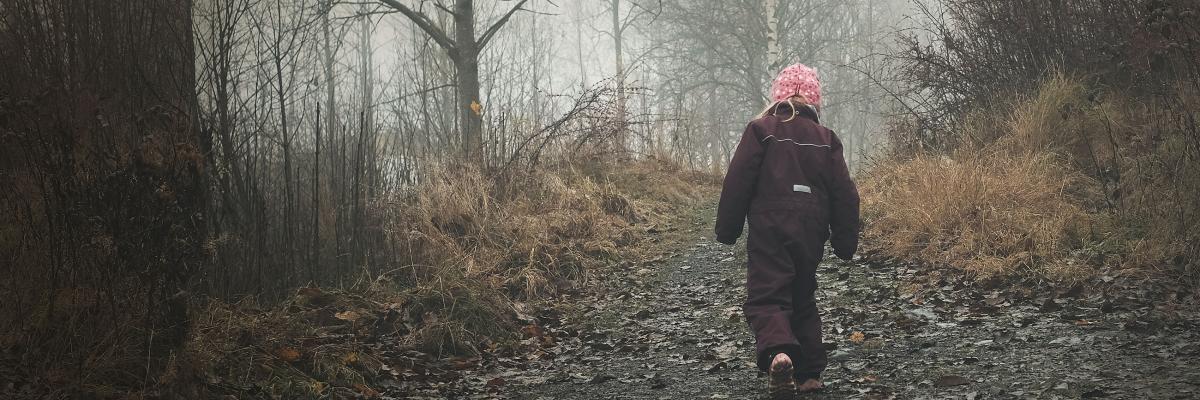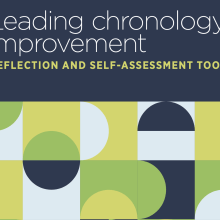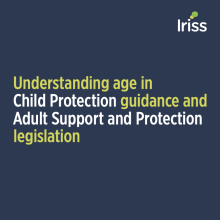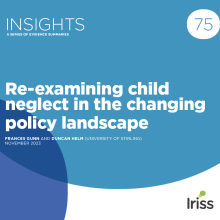Key points
- While it remains imperative for social workers to be attentive to the risk of harm to children from family members, child protection processes must be sufficiently flexible and responsive to respond to ‘extra-familial harm’ in a nuanced manner.
- Where child protection systems and processes require refreshing, a Contextual Safeguarding Framework provides a potential roadmap to respond to the ever-evolving range of risks and harms faced by children and young people.
- Child Criminal Exploitation (CCE) constitutes a particularly concerning form of ‘extra-familial harm’ which may intersect with trafficking. It appears to have become more prominent in Scotland over a relatively brief period, posing significant practice challenges. Further investigation is required to assess whether this stems from increased activity or greater awareness, monitoring and recording of the problem.
- Adolescents entangled in the youth justice system often exist at the interface between children and adults’ systems, with complex practice and legal dilemmas emerging as a result.
Introduction
The intention of this Insight is to consider some of the challenges posed to child protection processes in Scotland as a result of the evolving range of risks and harm which children and young people face in the 21st century. Specifically, I intend to focus on adolescents and to examine the concept of ‘extra-familial forms of harm’ (Firmin, 2020a, p11). As Erikson (1959) highlighted in his eight psychosocial stages of development model, the central task of adolescence is to forge a coherent identity. Difficulty in doing so places the adolescent at risk of future role confusion and potentially developing a weak sense of self. The model posits that the ‘identity vs role confusion’ stage spans the ages of 13-21. However, for practical reasons (not least legislation) this Insight concentrates on the adolescent experience up to the age of 18. While adolescence may be a time of growth, both physical and emotional, it is also a time of vulnerability. This vulnerability is exacerbated by the fact that adolescents occupy the space between childhood and adulthood. For those receiving support, this can often lead to difficulties in relation to their transitions between different systems and uncertainty as to who may be best placed to support them (Hall, 2019).
The youth justice context
Working in a youth justice setting, the susceptibility of young people to pressures, threats and incentives emanating from outwith the immediate family is evident. Sadly, coming into conflict with the law can be a corollary of this susceptibility. It is important to acknowledge that adolescents increasingly occupy space in the digital domain as well as the ‘real world’, the former an environment replete with both opportunities and risks (Ashurst and McAlinden, 2015; Firmin and colleagues, 2016; Firmin, 2020b). While the underpinning principles of Getting It Right For Every Child (GIRFEC) and the National Risk Assessment Framework (Calder and colleagues, 2012) can accommodate assessment of online risks, it is a complex area where assessment practice must constantly evolve if it is to remain relevant. However, this paper focuses less on extra-familial harm which occurs in the digital sphere and often encompasses forms of harmful sexual behaviour (HSB), and more on that which occurs in physical spaces from parks and stairwells to night buses and private homes. Specifically, it aims to unpick and to explore in greater depth the emerging and concerning phenomenon of Child Criminal Exploitation (CCE), a multi-layered form of extra-familial abuse. In so doing, it will argue that traditional child protection processes may be bolstered and improved by drawing on and implementing some of the core elements of the Contextual Safeguarding Framework which seeks to ‘rewrite the rules’ of child protection (Firmin, 2020a).
The child protection system
It has been noted by Featherstone and colleagues (2018, p3) that ‘The modern child protection system emerged in the 1960s rooted in a concern to stop babies dying or being ‘battered’ by parents, who were considered to be suffering from a lack of empathic mothering in their own lives’. While it is important to note that risks of this nature have by no means disappeared and infants and young children in particular remain acutely vulnerable to the abusive behaviour of immediate and extended family members in private residential settings, it is equally salient to acknowledge that between the 1960s and 2021 very significant social changes have occurred. These changes call into question whether the child protection system as originally created remains fit for purpose. In recognition of these issues, Featherstone and colleagues (2018, p8) have called for a Social Model of child protection which prioritises:
- Understanding and tackling root causes
- Rethinking the role of the state
- Developing relationship(s)-based practice and co-production
- Embedding a dialogic approach to ethics and human rights in policy and practice
The urgent need to challenge inequality and to understand the way poverty – ‘the wallpaper of practice: too big to tackle and too familiar to notice’ (Morris and colleagues, 2018, p370) – permeates child protection practice and underpins the Social Model. Moreover, it has been argued that the Social Model and Contextual Safeguarding Framework together might drive reform of the child protection system (Featherstone and colleagues, 2020, p7).
What is contextual safeguarding?
Contextual safeguarding has been evolving as a concept since 2011, the primer being a detailed review examining cases of peer-on-peer abuse over a three-year period undertaken by Firmin (2017a). In many respects this review highlighted the limitations of ‘framing abuse through the lens of family’ (Firmin, 2020a, p37). Based on the learning from this case file audit, the concept of contextual safeguarding was elaborated more fully with consideration given to the strategic and operational change required to shift child protection practice to pay closer attention to extra-familial harm (Firmin, 2017b).
In short, contextual safeguarding is best understood as ‘an approach to understanding, and responding to, young people’s experiences of significant harm beyond their families’ (Featherstone and colleagues, 2020, p3). The Contextual Safeguarding Framework is composed of four discrete domains (Firmin, 2020a, p94) which suggests systems:
- Target the contexts (social conditions) in which harm was occurring
- Locate contextual work in the field of child protection, child welfare and safeguarding, rather than crime reduction and community safety
- Be built on partnerships that had a reach into contexts where harm was occurring
- Measure success and outcomes contextually1
Contextual safeguarding is underpinned by an eclectic theory base, which among other things, draws from sociology, criminology, social work and public health. However, the work of Bourdieu (1990; 2001) has proven particularly instructive not least his concepts of ‘social fields’ and ‘habitus’ – the former relating to ‘the identified fields or social rules in any given context’; the latter concerning one’s ‘feel for the rules at play in social fields’ (Firmin, 2020a, p50). These concepts have resonance considering the weight placed during adolescence on status, reputation and social interaction in community spaces. It should also be noted that there is considerable symmetry between key elements of contextual safeguarding and the My World Triangle (one of the main components of GIRFEC and the National Practice Model). In essence, the My World Triangle encourages practitioners to embrace an ecological systems theory (Bronfenbrenner, 1979) to focus not solely on the individual, but also to take account of the context in which an individual exists, their interactions with others and the impact of social structures upon behaviour and choices.
In certain respects, the Contextual Safeguarding Framework seeks to grapple with age old questions about the respective influences of structure and agency upon human behaviour. It aims to offer a lens through which to understand and interpret behaviours and contexts in a more nuanced manner than that provided by the traditional child protection model. Certainly there is an attractive simplicity to understanding harm to a child solely as a result of the actions of a bad actor, such as an abusive step-father who physically assaults the five year old son of his partner while she is at work, triggering a child protection investigation. What about the fifteen-year-old girl who is sexually assaulted in the playing fields – which have been the site of similar offences in the preceding months – behind her school by a group of male peers, several of whom are also classmates? How well equipped is the existing child protection system to address the actions of a group of adolescents acting together as opposed to the actions of an individual? Moreover, is the existing child protection system cognisant of the need to consider ‘wheredunit’, not just ‘whodunit?’ (Sherman, 1995, pp36-37).
Applied to the sexual assault example, a contextual safeguarding lens might encourage the exploration of opportunities for peer safeguarding interventions (Latimer and colleagues, 2020). This might include completion of activities such as Peer Mapping (Peace and colleagues, 2020) to better understand the group dynamics shaping the interactions between the male perpetrators, as well as the interactions between the victim and the perpetrators outwith the context of the sexual assault. It would also underscore how approaches which ‘abstract human behaviour from environment are like oil to water … they will never mix’ (Firmin, 2020a, p183). As such, the locus of the playing fields might be assessed more fully as part of a Safety Mapping Exercise (Nyarko, 2018), with consideration given to the steps required to make the physical space a safer environment for adolescents.
Ultimately meaningful implementation of a contextual safeguarding approach would impinge upon all aspects of the child protection process – referral, screening, assessment, planning and intervention – and an overhaul and refresh of some systems and structures would be unavoidable. Careful consideration would also need to be paid to information-sharing arrangements between and across different agencies to ensure defensible, legal practice which is respectful of young people’s right to privacy without compromising their well-being (Firmin and Knowles, 2020).
Child Criminal Exploitation (CCE) and child protection
Having elaborated the key domains of the Contextual Safeguarding Framework, we will now consider the phenomenon of Child Criminal Exploitation (CCE), which has posed a number of significant practice challenges in the youth justice field. Drawing on a case vignette,2 it will highlight how the child protection system can be stretched and strained when seeking to meet the needs of adolescents affected by CCE and how adoption of a contextual safeguarding approach might help ease some of this strain.
No legal definition of CCE has been formalised but in its Serious Violence Strategy (2018, p48) the Westminster Government noted CCE occurs where:
…an individual or group takes advantage of an imbalance of power to coerce, control, manipulate or deceive a child or young person under the age of 18 into any criminal activity (a) in exchange for something the victim needs or wants, and/or (b) for the financial or other advantage of the perpetrator or facilitator and/or (c) through violence or the threat of violence. The victim may have been criminally exploited even if the activity appears consensual.
With respect to terminology, CCE is preferred in Scotland to the term ’County Lines’ but there is an extent to which they are used almost interchangeably in some of the emerging literature (Coomber and Moyle, 2018; Stone, 2018; Holligan and colleagues, 2020). What is clear is that exploitation is the overriding theme in the drugs underworld. Furthermore, as several recent Serious Case Reviews (SCRs) underscore, the harm inflicted on adolescents as a result of their participation in these activities can be severe and on occasion fatal (Newham Local Safeguarding Children Board, 2018; Waltham Forest Safeguarding Children Board, 2020).
Case vignette
Three adolescents from Local Authority A are reported missing to Police Scotland having absconded together. Adolescent A (14) resides at home with his parents and younger sister (10). Adolescent B (15) resides in residential care subject to a Compulsory Supervision Order (CSO) with a condition of residence. Adolescent C (16) resides in a homeless hostel and is not subject to any legal order. Four days after being reported missing, all of the adolescents are located in a flat in Local Authority B, over 100 miles from their home addresses. The property belongs to an adult male with learning disabilities and is believed to have been ‘cuckooed.’3 Drug paraphernalia is scattered throughout the property. A large quantity of cash, wraps of heroin and multiple ‘burner’ mobile phones are seized. Another adult male from outwith Scotland is also located in the property.
Applying the Contextual Safeguarding Framework
In terms of responding to the child protection challenges posed in the case vignette, several dilemmas come to the forefront. Given that CCE often goes unrecognised, ‘children are more likely to be prosecuted for offending behaviour, rather than being recognised as victims of exploitation’ (Scottish Government, 2020a, p184). As such, there is a risk that on locating the adolescents they are immediately charged with drug supply offences as opposed to being considered as potential victims of CCE. Additionally, Lightowler (2020, p4) highlights how in Scotland ‘policy and practice is confused about the legal definition of ‘children’ which is a particular difficulty for 16 and 17 year olds’. The Children (Scotland) Act 1995, the Children’s Hearings (Scotland) Act 2011 and the Children and Young People (Scotland) Act 2014 all offer different legal definitions of childhood. While there is much to be recommended in the progressive approach adopted in The Promise where, in line with the United Nations Convention on the Rights of the Child, the word ‘child’ is used to describe ‘a human being below the age of 18 years’ (Independent Care Review, 2020, p10); in the proposal to raise the age of referral to the Children’s Reporter (Scottish Government, 2020a) and in progressive local child trafficking and exploitation policies (eg Glasgow Child Protection Committee (GCPC) 2019), the picture in practice is more dispiriting. In the case vignette, the potential for the three adolescents to be treated differently based on their age (specifically whether over or under sixteen) and their legal status is clear, this could result in markedly different outcomes affecting future life chances.
Helpfully in relation to CCE the draft National Child Protection Guidance suggests, ‘contextual safeguarding needs to be considered in managing the risks to and from the young person, as a traditional focus solely on the family, rather than wider relationships may not suffice in managing presenting behaviours’ (Scottish Government, 2020a, p183). If one were to assume that Local Authority A had advanced from Level 1 contextual safeguarding – where ‘child protection systems and safeguarding partnerships … are better equipped to respond to, and prevent, extra-familial harm’ – to Level 2 contextual safeguarding – ‘characterised by the design of new structures, processes and activities’ (Firmin, 2020a, pp148-149) – how might this shape the response to the adolescents’ situation?
Firstly, it is recognised that when concerns about the potential trafficking and/or exploitation of a child are identified, an Inter-Agency Referral Discussion (IRD) is the appropriate response (Scottish Government, 2020a, p184). Local Authority A might have modified its referral processes to accommodate peer group referrals as opposed to individual cases only. As such, consideration could be given to an IRD considering the needs of all three adolescents collectively rather than as three discrete individuals. In doing so, a peer group mapping exercise (Firmin, 2020a, p155) might facilitate a richer understanding of the group dynamics, the strength of the associations and the influence exercised by different group members.
Secondly, recognising the intersection of trafficking and CCE, IRD participants would consider whether referral of the adolescents to the National Referral Mechanism (NRM)4 may be required, cognisant of the definition of human trafficking as it relates to children in s.4(a) of the Council of Europe Convention on Action Against Trafficking in Human Beings. In turn, this may have implications for any future criminal proceedings. The Lord Advocate’s instructions for prosecutors when considering prosecution of victims of human trafficking and exploitation, stemming from the Human Trafficking and Exploitation (Scotland) Act 2015, make it clear that there is a ‘strong presumption against prosecution’ when there is ‘sufficient evidence’ that a ‘child aged 17 or under’ committed an offence, ‘in the course of or as a consequence of being the victim of human trafficking or exploitation’.5 If on submitting initial evidence to the NRM a ‘reasonable grounds’ finding is returned, this ought to be sufficient to stall if not preclude any criminal proceedings. Such a finding would have implications for the Children’s Reporter too. In the event of either of the two younger adolescents attending a Children’s Hearing on this matter, there would be an expectation that this would be framed as a care and welfare referral, rather than one of offence. It is salient to note that recent data (Home Office, 2020) highlights an increase in NRM referrals for children believed to have been exploited through participation in ‘County Lines’. The vast majority of these individuals are UK nationals. When considering child trafficking and exploitation an international cross border dimension is often assumed, but that is overly simplistic. Serious and Organised Crime (SOC) networks based in the UK exploit and traffic children by recruiting them into drug supply and demand on occasion that they travel across different parts of the country to service different drug markets. It is necessary to challenge the misplaced assumption that children under the age of 18 enter into such arrangements freely.6
Thirdly, a contextual safeguarding lens would ensure that sufficient attention was paid to the physical spaces and contexts in which CCE was occurring. Working in partnership with Local Authority B, making safe the ‘cuckooed’ property and ensuring the vulnerable adult tenant was supported would be priorities. Equally, attention would be paid to the manner of the adolescents’ recruitment into the illegal activity. It may be that associating together in unsafe community spaces in Local Authority A made them susceptible to the attention of out-of-town drug dealers seeking to identify vulnerable targets to recruit. As such, steps might be taken to make spaces safer through improved lighting and CCTV, but also through promotion of ‘natural surveillance’ by passers-by and sympathetic business owners, nurturing a form of community guardianship (Wroe and Lloyd, 2020).
Implications for the workforce
In summary, this Insight attempts to demonstrate how child protection practice cannot afford to stand still or to remain too tightly wedded to a view of risk and harm to children that is unduly individualistic and narrowly focussed on the family. It has sought to place ‘extra-familial harm’ at the forefront for analysis and looked specifically at the phenomenon of CCE to interrogate this concept in greater depth. In doing so, contextual safeguarding is identified as a framework to complement and strengthen existing child protection practice, particularly when working with adolescents. Some key implications for the social services workforce are as follows:
- Adolescence is a time of both risk and opportunity. While many will navigate this developmental period without significant incident, others will be drawn into risk-taking behaviour, which may have a harmful impact on their well-being. It is incumbent on child protection practitioners to be curious and informed about the particular extra-familial risks faced by adolescents, whether offline or in the digital domain, and to expect that child protection systems and processes are sufficiently flexible to respond to these challenges.
- A Contextual Safeguarding Framework, if implemented in a robust manner, has the potential to re-shape significant aspects of child protection practice, not least referral and screening, assessment and intervention processes. This paper does not prescribe a complete overhaul of existing child protection processes, but casts light on certain alternative models and approaches, to start a conversation about where change might be useful and where existing systems are wholly adequate.
- CCE is a particularly problematic form of extra-familial harm. In responding appropriately to the needs of adolescents caught up in this dangerous world, practitioners need to recognise and understand the mechanics of exploitation and trafficking, the legal provisions available to protect those exploited, and the limitations of a rush to criminalise.
References
- Ashurst L and McAlinden AM (2015) Young people, peer-to-peer grooming and sexual offending: understanding and responding to harmful sexual behaviour within a social media society. Probation Journal, 62, 374-88
- Bourdieu P (1990) In other words: essays towards a reflexive sociology. 1st ed. Stanford: Stanford University Press
- Bourdieu P (2001) Masculine domination. Stanford: Stanford University Press
- Bronfenbrenner U (1979) The ecology of human development: experiments by nature and design Cambridge: Harvard University Press
- Calder M, MacKinnon M and Sneddon R (2012) National risk framework to support the assessment of children and young people. Edinburgh: Scottish Government
- Coomber R and Moyle L (2018) The changing shape of street-level heroin and crack supply in England: Commuting, holidaying and cuckooing drug dealers across ‘County Lines’. British Journal of Criminology, 58, 1323-1342
- Council of Europe Convention on Action Against Trafficking in Human Beings.
- Children (Scotland) Act 1995.
- Children’s Hearings (Scotland) Act 2011.
- Children and Young People (Scotland) Act 2014.
- Erikson E (1959) Identity and the life cycle. New York: W.W Norton
- European Court of Human Rights (ECthR) (2021) Case of V.C.L. and A.N. v. United Kingdom.
- Featherstone B, Gupta A, Morris K et al (2018) Protecting children: a social model. Bristol: Policy Press
- Featherstone B, Firmin C, Gupta A et al (2020) The social model and contextual safeguarding: key messages for practice.
- Firmin C (2017a) Contextual risk, individualise responses: an assessment of safeguarding responses to nine cases of peer-on-peer abuse. Child Abuse Review, 27, 42-57
- Firmin C (2017b) Contextual safeguarding: an overview of the operational, conceptual and strategic framework.
- Firmin C (2019) Contextual safeguarding: re-writing the rules of child protection, TedXTottenham.
- Firmin C (2020a) Contextual safeguarding and child protection: rewriting the rules. Abingdon: Routledge
- Firmin C (2020b) School rules of (sexual) engagement: government, staff and student contributions to the norms of peer sexual-abuse in seven UK schools. Journal of Sexual Aggression, 26, 289-301
- Firmin C and Knowles R (2020) The legal and policy frameworks for contextual safeguarding approaches: A 2020 update on the 2018 legal briefing.
- Firmin C, Warrington C and Pearce J (2016) Sexual exploitation and its impact on developing sexualities and sexual relationships: the need for contextual social work intervention. British Journal of Social Work, 46, 2318-2337
- Glasgow Child Protection Committee (2019) Child trafficking and exploitation inter agency guidance.
- Hall HA (2019) Transitions of young people with service and care needs between child and adult services in Scotland.
- Holligan C, McLean R and McHugh R (2020) Exploring county lines: criminal drug distribution practices in Scotland. Youth Justice, 20, 50-63
- Home Office (2020) National referral mechanism statistics UK, Quarter 1 2020 – January to March.
- HM Government (2018) Serious violence strategy.
- Human Trafficking and Exploitation (Scotland) Act 2015.
- Independent Care Review (2020) The Promise.
- Latimer K and Adams Elia C with Firmin C (2020) Opportunities for peer safeguarding intervention.
- Lightowler C (2020) Rights respecting? Scotland’s approach to children in conflict with the law.
- Lord Advocate’s instructions for prosecutors when considering prosecution of victims of human trafficking and exploitation.
- Morris K, Mason W, Bywaters P et al (2018) Social work, poverty and child welfare interventions. Child and Family Social Work, 23, 364-372
- Newham Local Safeguarding Children Board (2018) Serious Case Review – Chris – overview report – August 2018.
- Nyarko S (2018) Contextual safeguarding: safety mapping exercise. [MS Word]
- Peace D, Notarianni M and Latimer K (2020) Peer mapping case studies and examples: using this tool within safeguarding practice.
- Rigby P, Malloch M, Beetham T et al (2020) Child trafficking in Scotland.
- Scottish Government (2020a) Draft national child protection guidance.
- Scottish Government (2020b) Child care and justice – consultation on raising the age of referral to the principal reporter.
- Sherman L (1995) Hot spots of crime and criminal careers of place. In Eck JE and Weisburd D (eds) Crime and place: crime prevention studies 4. Monsey, NY: Willow Tree Press
- Stone N (2018) Child criminal exploitation: ‘County Lines’, trafficking and cuckooing. Youth Justice, 18, 285-293
- Waltham Forest Safeguarding Children Board (WFSCB) (2020) Serious Case Review – Child C a 14 year old boy.
- Wroe L and Lloyd J (2020) Watching over or working with? Understanding social work innovation in response to extra-familial harm.
Acknowledgements
This Insight was reviewed by Helen Allbutt (NHS Education for Scotland), Leigh Ann Parker (Edinburgh City Council), Paul Rigby (University of Stirling), Andy Sirel (Just Right Scotland), Lauren Wroe (University of Bedfordshire) and Scottish Government colleagues. Comments represent the views of reviewers and do not necessarily represent those of their organisations. Iriss would like to thank the reviewers for taking the time to reflect and comment on this publication.
1 Carlene Firmin summarises in an accessible and engaging manner the core elements of the contextual safeguarding approach in her TedxTottenham Talk on 16 May 2019. The Contextual Safeguarding Network is also a burgeoning group with some 7,000+ practitioners and a wealth of relevant resources which can be accessed for free.
2 The case vignette is fictional but draws on several of the themes and issues which have arisen as a result of direct work with adolescents affected by CCE.
3 The Serious Violence Strategy (2018, p48) highlights how, ‘vulnerable adults have their homes taken over as traphouses (known as ‘cuckooing’)’. The phenomenon of ‘cuckooing’ has been portrayed recently in both film (County Lines) and television dramas (The Line of Duty and Top Boy).
4 See Rigby et al (2020) for a more detailed overview of Child Trafficking in Scotland and a detailed glossary where key terms inter alia NRM, ‘reasonable grounds’, ‘conclusive grounds’ and Singe Competent Authority (SCA) are explained.
5 In order to be considered a victim of human trafficking three constituent elements must be present – often summarised as ‘means’, ‘action’ and ‘purpose’. For children under 18 whether they consented or were coerced into the exploitation does not matter and the ‘means’ tests does not apply.
6 A recent ruling by the European Court of Human Rights (ECthR) – V.C.L. and A.N.V. the United Kingdom – highlighted the incompatibility of Articles 4 and 6 of the European Convention on Human Rights (ECHR) with a decision by the Crown Prosecution Service (CPS) in England to proceed with the prosecution of two potential victims of child trafficking which resulted in both receiving custodial sentences.





